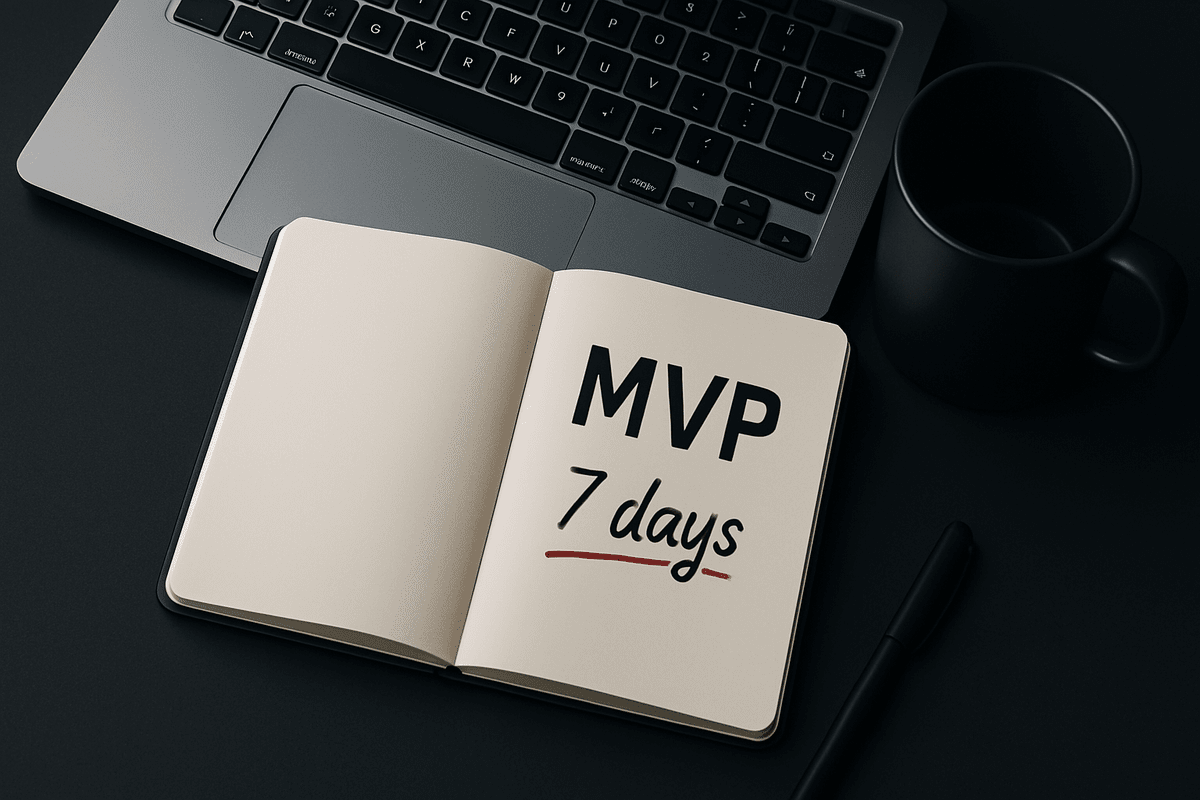Building an MVP in 7 Days: Overview

Today we begin a fun new journey! I’m going to be building an MVP for a project I’ve been wanting to do for quite some time, and I’m going to do it in seven days flat.
Why seven days? Well, a number of reasons. But the biggest part is motivation and Parkinson’s Law — the principle that work expands to fill the allotted time. By giving myself seven days, that’s how long it’ll take. (At least in theory!)
Project overview
The project is QuireHub, which will be a web app for managing choirs. As someone who has managed a few choirs, the administration aspect can be quite overwhelming at times; there are lots of moving parts, including managing membership, tracking attendance, planning repertoire, sending reminders, scheduling rehearsals and performances, and more.
I’ll be building it with Django. I chose Django because I’m already familiar with Python, and because its “batteries included” nature means it’s pretty quick to get something off the ground. I could have opted for Next.js, but it’s been some time since I’ve used React extensively and I didn’t really want to get bogged down learning new React and Next features. I want to get to building. As a solo dev, there is also a lot more complexity with full-stack Javascript vs. frameworks like Django, Rails, or Laravel. Rails and Laravel would also have been good choices in my estimation, but I’m not very familiar with either at this point.
For styling I’ve opted for DaisyUI, which is an open-source component library for Tailwind. Modern CSS is fantastic, but vanilla CSS would add a lot of overhead and take much longer. Bootstrap would also be ok, but… it’s Bootstrap and it’s 2025. (Just kidding. Sorta. It is possible to make Bootstrap look good, but I don’t want to spend time customizing it and I don’t want to pay for a theme at this stage.) There are of course other options, but Tailwind is almost a default starting point these days, and DaisyUI allows me to move even quicker.
If I really wanted to get fancy, I could opt for DRF or Django Ninja and make the backend and frontend completely separate. But — again — that adds a lot of time to the building process. Using Django templates as the starting point allows me to move much faster.
I will be adding HTMX and possibly Alpine.js for client-side interactivity and reactivity, but those will be UI enhancement elements, rather than replacing the templates with e.g. React.
Project features
This will be an MVP, but I think it’s important to “begin with the end in mind” to some degree. Having a sense of what the final product might be will help me make some technical decisions at the beginning. Many features can be implemented after the initial MVP is built, but some might be difficult to implement if I don’t make accommodations for them at the beginning.
A great example of this is multi-tenancy. I would like to be able to release this as an open-source and self-hostable project, but it would also be great to have a hosted, paid version. This kind of approach is taken by many popular open-core products on the market today. The hosted version would be multi-tenant, but the self-hosted version should only allow a single tenant (choir). While it is easier to just build the single-tenant version from the start, if I don’t make accommodations for multi-tenancy at the beginning, it might be quite difficult to change later on after the initial infrastructure is in place.
So, with that said, here is a list of features that I could foresee being implemented in the final product:
- Multi-tenancy: Support for multiple choirs in hosted (paid) version. Potentially, a user of the app could be a regular member of one choir and an admin in another
- Membership: Adding and managing members of choirs, including contact info, voice part, admin privileges
- Admins: Admin privileges for the owner of the choir, as well as designated choir administrators (who may or may not be singing members of the choir)
- Events: Creating rehearsals, performances, and other custom events (set core events, but ability for admins to create custom events)
- Attendance tracking: Tracking of attendance for events
- Repertoire: Uploading of music, either
.pdfscores or.mp3recordings / practice tracks - Announcements: Admins can send email (perhaps later text as well) reminders and other announcements / communications
- Seating charts: Creation of seating charts for performances